Riley Banks's Blog, page 29
December 6, 2013
Oldies but Goodies
Oldies but Goodies by Michele Kunz What do you think about when you hear the names Jesse Katsopolis, Corey Matthews, Will Smith and Tim (The Tool Man) Taylor? While times have certainly changed and the programs became dated, their appeal continues to grow among the viewing audience. The characters are tried and true and have […]
If you enjoyed this post, you might like:
 Pretty Little Liars
Pretty Little Liars
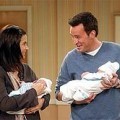 Friends Still Proving Popular a Decade On
Friends Still Proving Popular a Decade On
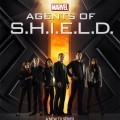 Marvel’s Agents of S.H.I.E.L.D
Marvel’s Agents of S.H.I.E.L.D
 Claire Holt reveals Rebekah and Matt will end
Claire Holt reveals Rebekah and Matt will end
 5 things I want from S4 of The Walking Dead
5 things I want from S4 of The Walking Dead
 Vampire Diaries S5 – I know what you did last summer
Vampire Diaries S5 – I know what you did last summer

If you enjoyed this post, you might like:
 Pretty Little Liars
Pretty Little Liars Friends Still Proving Popular a Decade On
Friends Still Proving Popular a Decade On Marvel’s Agents of S.H.I.E.L.D
Marvel’s Agents of S.H.I.E.L.D Claire Holt reveals Rebekah and Matt will end
Claire Holt reveals Rebekah and Matt will end 5 things I want from S4 of The Walking Dead
5 things I want from S4 of The Walking Dead Vampire Diaries S5 – I know what you did last summer
Vampire Diaries S5 – I know what you did last summer
Published on December 06, 2013 20:01
Book Review: Turning by Melinda Chapman
Reviewed by Lucy Pireel Title: Turning Author: Melinda Chapman Genre: paranormal, short story Blurb: For the past year, Mari has relentlessly fought the undead. Australia – if not the entire world – is devoid of electricity, running water, and 99% of the human population. All Mari has to […]
If you enjoyed this post, you might like:
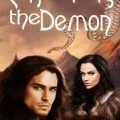 Book Review: Confronting the Demon by Ciara Ballintyne
Book Review: Confronting the Demon by Ciara Ballintyne
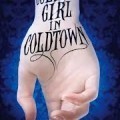 Book Review: The coldest girl in Coldtown by Holly Black
Book Review: The coldest girl in Coldtown by Holly Black
 Book Review: Luna Sanguis by Simon Okill
Book Review: Luna Sanguis by Simon Okill
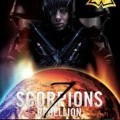 Book Review: 7 Scorpions Rebellion by Mike Saxon
Book Review: 7 Scorpions Rebellion by Mike Saxon
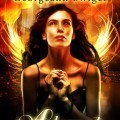 Book Review: Adorned by Georgeann Swiger
Book Review: Adorned by Georgeann Swiger
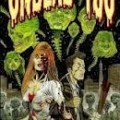 Mad About Undead You by Carl Plumer
Mad About Undead You by Carl Plumer

If you enjoyed this post, you might like:
 Book Review: Confronting the Demon by Ciara Ballintyne
Book Review: Confronting the Demon by Ciara Ballintyne Book Review: The coldest girl in Coldtown by Holly Black
Book Review: The coldest girl in Coldtown by Holly Black Book Review: Luna Sanguis by Simon Okill
Book Review: Luna Sanguis by Simon Okill Book Review: 7 Scorpions Rebellion by Mike Saxon
Book Review: 7 Scorpions Rebellion by Mike Saxon Book Review: Adorned by Georgeann Swiger
Book Review: Adorned by Georgeann Swiger Mad About Undead You by Carl Plumer
Mad About Undead You by Carl Plumer
Published on December 06, 2013 19:50
December 5, 2013
Should you discount your book or give it away free?
Should you discount your book or give it away free? Derek Halpern is a bit of a social marketing guru. I love his videos. They are so informative and helpful. Which is why I had to share the one I watched this morning. Now while this particular video is aimed at product […]
If you enjoyed this post, you might like:
 How to self-publish a book
How to self-publish a book
 12 things that will get your book review request turned down
12 things that will get your book review request turned down
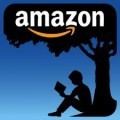 Does KDP Select drive more sales?
Does KDP Select drive more sales?
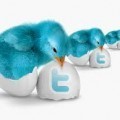 The Beginner’s Guide to Social Media: Twitter part 2
The Beginner’s Guide to Social Media: Twitter part 2
 Why people do judge books by their covers
Why people do judge books by their covers
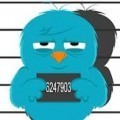 The beginner’s guide to social media: Twitter part 3
The beginner’s guide to social media: Twitter part 3

If you enjoyed this post, you might like:
 How to self-publish a book
How to self-publish a book 12 things that will get your book review request turned down
12 things that will get your book review request turned down Does KDP Select drive more sales?
Does KDP Select drive more sales? The Beginner’s Guide to Social Media: Twitter part 2
The Beginner’s Guide to Social Media: Twitter part 2 Why people do judge books by their covers
Why people do judge books by their covers The beginner’s guide to social media: Twitter part 3
The beginner’s guide to social media: Twitter part 3
Published on December 05, 2013 22:57
December 4, 2013
The ritual burning of NaNoWriMo
Let’s talk about NaNoWriMo. For those of you who are not familiar with NaNoWriMo (or NaNo as I shall call it from this point on) let me enlighten you. NaNo takes place in November and it is a time when authors from all over the world join together in their fight for success. It […]
If you enjoyed this post, you might like:
 Should you discount your book or give it away free?
Should you discount your book or give it away free?
 Author Interview: Ashley Stoyanoff
Author Interview: Ashley Stoyanoff
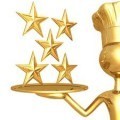 The negative side of positive reviews
The negative side of positive reviews
 How to get published with Ellora’s Cave
How to get published with Ellora’s Cave
 How to get published with Top That! Publishing
How to get published with Top That! Publishing
 Get published with Fire and Ice YA
Get published with Fire and Ice YA

If you enjoyed this post, you might like:
 Should you discount your book or give it away free?
Should you discount your book or give it away free? Author Interview: Ashley Stoyanoff
Author Interview: Ashley Stoyanoff The negative side of positive reviews
The negative side of positive reviews How to get published with Ellora’s Cave
How to get published with Ellora’s Cave How to get published with Top That! Publishing
How to get published with Top That! Publishing Get published with Fire and Ice YA
Get published with Fire and Ice YA
Published on December 04, 2013 20:58
February 3, 2013
Nominations for the Liebster Award - recognising excellence in blogging.
 First, I want to thank Martin Crosby (http://strangerdesigns.blogspot.com.au/2013/02/darker-times-and-liebster-list.html) for ‘nominating’ me for a Liebster Award.
First, I want to thank Martin Crosby (http://strangerdesigns.blogspot.com.au/2013/02/darker-times-and-liebster-list.html) for ‘nominating’ me for a Liebster Award. Not sure who started the Liebster Awards but it’s a great way to spread the love and to discover new blogs.
Here are the requirements: I have to list 11 random facts about me, then answer 11 questions asked by the person who nominated me (that would be Martin). I then nominate 11 bloggers to follow on from me and come up with 11 new questions (cannot use the same ones I was asked). I post the award on my blog and it goes on – hopefully bringing new readers to our blogs.
So here goes. Eleven facts about me – this should be fun:
1. Riley is not my real name. It is a pseudonym I came up with to protect my poor mother’s innocence due to the ‘racy’ nature of The William S Club. My real name is Rebecca.
2. I have lived in four different countries – Australia, Papua New Guinea, United Arab Emirates and Saudi Arabia. I have also lived in four different states in Australia – Victoria, New South Wales, Queensland and Tasmania, pretty much ticking off the entire eastern seaboard with the exception of Canberra.
3. My best friend calls me Gypsy Girl because of my relentless moving and my addiction to travel (in addition to living in four states and four countries, I have lived in more than 32 different houses in 40 years. Considering I lived in the same childhood house for 15 years, that’s a LOT of moves.
4. Having had my first child at 20, I have always been one of the youngest mother’s in my children’s schools. Now 40, I am in the scary position of having children who are 19, 17 and 15 when most of my friends have children in pre-school!
5. I have been married for 20 years and am still hopelessly in love with my husband – to the point that we talk to each other several times a day.
6. I am the youngest of 8 children!
7. As much as I wish it was, the photo on my profile page is not me but the main character out of The William S Club – Charlotte Burke.
8. I still check under my bed before I go to sleep, and if I forget, I cannot sleep properly!
9. I once inadvertently caused a major diplomatic incident while working at the Australian Embassy in Papua New Guinea!
10. I am a complete TV and movie addict – my favourite shows include Vampire Diaries, Supernatural, The Walking Dead, and Grey’s Anatomy. I also watch reality TV shows like The Voice Australia, X Factor Australia, The Block, Celebrity Apprentice and My Kitchen Rules, often roping my poor husband into watching with me. I am so addicted that, if I can’t remember an actor’s name or what else they’ve been in, I will look them up on IMDB just to appease my curiosity.
11. If I could live in any country in the world, it would definitely be France. I am a total Francophile who gushes madly about the country, the food, the people and the language. No wonder France often features in my books.
Answers to Martin’s 11 Questions:
1. Do you write your first drafts by hand?
I write some rough notes by hand. The rest is done on the computer. Having started my career as a Personal Assistant, I type much faster than I write.
2. Do you follow more than 10 blogs?
Umm, yes – lots more. But I am the worst blog follower ever. Unless a headline grabs me, I don’t bother reading (hint to bloggers – put as much work into your heading as you do the content). That is because, thanks to working two jobs and trying to write books under two different author names (oh, and trying to be a good mum and wife), I am very, very time poor. I delete far more email than I actually read. I do have a handful of blogs that I always pay attention to though.
3. Do you play a musical instrument?
Very badly. I learned piano as a child but my parents forced me to choose between going to private school and continuing with piano lessons. I actually chose the piano lessons and then they told me I made the wrong choice and sent me to private school anyway. Have always wished I could play piano better. My grandfather was a concert pianist and music kind of runs through my family. A good piano solo can actually bring me to tears. I can sing though – so you could say I play the vocal chords.
4. Given the choice, which opera would you attend?
Phantom of the Opera every time. Saw it in Melbourne when I was a teenager and then took my daughter to see it in London. Love Phantom so much.
5. eBook or paper book?
Paper, without a doubt – I love the feel of a book in my hand, though I must admit, I love the space saving benefits of an ereader. Being able to take 15 books on holidays on one tiny device saves lots of arguments with the husband about too much luggage.
6. Do you use an electric blanket?
Never! I get really hot when I sleep and have been known to turn a fan on in the middle of winter. I love a cold bedroom. That way I can snuggle with my hubby under the blankets and keep warm together.
7. Do you write in cafes?
No. I rarely go to cafes alone (maybe because I don’t drink coffee). I’m usually there with my husband or with friends. Plus, as I said earlier, I tend to write so much faster on a computer.
8. Is there a film that has influenced you greatly?
Movie addict here. Lots of movies have influenced me. I’m the kind of person who can watch a movie over and over and over again – that is if it grabs me. If it doesn’t, I won’t bother watching again. Saw Dances with Wolves about 14 times at the cinemas and have since seen in a number of times on DVD. Probably my favourite movie ever is Gone with the Wind. But also love Braveheart, particularly as I am related to Robert the Bruce on my mother’s side.
9. Do you keep a diary?
Have tried to a number of times but I’m really bad at it. I write for a couple of days then forget for years, then half-heartedly try to take it back up again, only to lose interest again. One day I will have to write down all my experiences before they are gone forever.
10. Which foodstuff do you like the least?
Anchovies! Incidentally, they are my husband’s favourite, but guaranteed to make me puke.
11. Do you listen to music while you work? If so, what?
It depends. Sometimes I do. Sometimes I can’t because I am so deeply engrossed in my writing that anything exterior to that is a distraction. I have three different stages of ‘music’ for writing. One is a list with all my favourite songs on it (far too many to name). Then when I find the lyrics in songs distracting, I switch to instrumental music only (lots of movie soundtracks, which I’m a bit of a sucker for). Then there is the sounds of silence when I really need to focus, where I can’t handle anything on in the background.
My 11 nominations - apologies in advance for not pre-warning you.
Anyway people, I encourage you to sign up for their blogs and follow them on Twitter.
1. Luke Romyn (http://www.lukeromyn.com/) - Twitter: https://twitter.com/LukeRomyn
2. DH Nevins (http://www.dhnevins.com/) – Twitter: https://twitter.com/dhnevins
3. Simon Okill (http://tassyoneill.wix.com/the-phantom-bigfoot) – Twitter: https://twitter.com/SimonOkill
4. Andy Szpuk (http://andyszpuk.wordpress.com/) – Twitter: https://twitter.com/AndySzpuk
5. Debra Wattes (http://www.debrawattes.com/) – Twitter: https://twitter.com/DebraWattes
6. Dianne Harman (http://dianneharman.com/) – Twitter: https://twitter.com/DianneDHarman
7. Travis Luedke (http://www.twluedke.com/) – Twitter: https://twitter.com/TWLuedke
8. Vince Considine (http://www.vconisidne.com/) - Twitter: https://twitter.com/JAEL488
9. Clive Eaton (http://www.cliveeaton.com/) – Twitter: https://twitter.com/CliveEaton
10. Vampire Origins (http://www.vampireorigins.net/) – Twitter: https://twitter.com/vampireorigins
11. Eric B Thomasma (http://ericbt.webs.com/) – Twitter: https://twitter.com/seams16
Questions for my nominees:
1. If a genie offered you the chance to switch places with a fictional character for a day, who would it be and why?
2. If you could travel back in time to any period in history, when would it be and why?
3. Where do you find your ideas for your blogs/books/writing?
4. Of the seven deadly sins, what is your biggest vice? (Lust, gluttony, greed, sloth, wrath, envy, pride)
5. What is the most embarrassing thing that has ever happened to you?
6. Who is your favourite person on earth and why do you choose that person?
7. Name three things on your bucket list.
8. If you could choose any celebrity/famous person to do the foreword for your book, who would it be and why?
9. Your book reaches the top spot on the New York Times Best Sellers list, netting you a cool million in book sales. What is the first thing you buy with your million dollars?
10. What is your favourite sport to watch on television?
11. Favourite holiday destination?
Make sure to let me know when you post your answers. I'm very keen to read what you all have to say.
Published on February 03, 2013 19:26
January 30, 2013
Win a paperback copy of The William S Club.
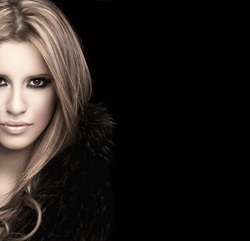 Do you want to win a paperback copy of The William S Club.
Do you want to win a paperback copy of The William S Club. Tell me in 500 words or less, which fictional character you would you most like to spend the weekend with and why you would choose that character. Then give me a brief run down of the activities you would plan for your 'Fantasy Guest'.
Maybe you want to spend the weekend solving mysteries with Sherlock Holmes, saving the world with James Bond, tied up in Christian Grey's basement, flying around the world with Damon Harvey or making magic with Harry Potter. Maybe Mr Darcy floats your boat.
To enter, post the characters name, what book they are from, why you would choose them and what you would do with them for a whole weekend (and maybe even where) in the comments section of this thread. Most creative answer wins a copy of The William S Club.
Competition ends Friday 29 March 2013.
Published on January 30, 2013 19:43
January 11, 2013
The beginner's guide to Social Media: Part 2 Twitter and Retweeting
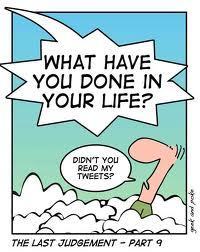 Welcome to week 2 of The Beginner's Guide to Social Media. There was such a positive response to last week's blog that it is obvious many of you are floundering it the Twitter-verse, wondering what to do next. Hopefully you have your head around the basics now. You know what a follower is and how to follow people. You know what tweets and retweets are. You should also know how to mention someone on Twitter, how to direct message them (and when not to DM) and what the basic function of hashtags are.
Welcome to week 2 of The Beginner's Guide to Social Media. There was such a positive response to last week's blog that it is obvious many of you are floundering it the Twitter-verse, wondering what to do next. Hopefully you have your head around the basics now. You know what a follower is and how to follow people. You know what tweets and retweets are. You should also know how to mention someone on Twitter, how to direct message them (and when not to DM) and what the basic function of hashtags are. If you were good students, you would have spent the week practicing your newfound Twitter skills.
So what next? I'll apologize in advance, as there is quite a lot of content this week. I've tried to break it up into bite size chunks. Feel free to bookmark it and read at your own pace. And as always, please feel free to pass on my blog.
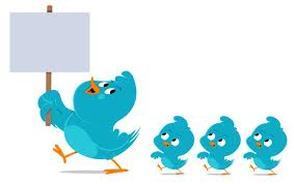 INCREASING YOUR TWITTER FOLLOWERS
INCREASING YOUR TWITTER FOLLOWERSNow that you have your head around following other people, you are ready for the next step - getting people to follow back.
Why do you want more followers?
Well, Twitter is a little like a schoolyard clique. The more popular you are, the more people want to hang out with you and follow you around. The more people follow you around, the more they retweet your tweets and spread the word about you. The more people hear about you, the more people discover your books. The more people discover your books, the more sales you generate and the more money you make.
Simple, huh?
So how do you become one of the popular kids?
It's not as hard as it seems. You follow people and hopefully, they follow back.
Before I go any further, let me just make it clear that I'm no expert. Like you, I am stumbling my way through the Twitter-verse, finding out information as I go and sharing it with my friends. In terms of followers, I'm not in the Too Cool for School group yet. But at 3.5K followers, I've made it out of the Geek Squad and am making my way up the Clique Ladder.
In the Twitter-verse, anything less than 1000 followers is considered small. Once you break into triple numbers, the followers will flock to you. The more followers you have, the more people want to jump on your fast-moving bandwagon. Juvenile - sure. But that's the way it all works. Look at the mega-popular kids. The real celebrities.
The biggest hitters on Twitter are:
1. Lady Gaga with 32,911,170 followers.
2. Justin Bieber with 32,820,740 followers.
3. Katy Perry with 31,067,793 followers.
4. Rhianna with 27,774,124 followers.
5. Barack Obama with 25,681,676 followers.
Now slow down. I'm not suggesting you will knock Gaga off her Twitter Throne but by following a few hints and suggestions, you will see your follower numbers grow.
Last week, I touched a little on following like minded people. For example, as authors, the easiest way to add to our followers list is to follow other authors. It's a great community and most of them will follow you back.
So let's assume you added some authors and they have all followed you back. Your Twitter numbers are growing but it's done nothing for your sales yet.
Let's get one thing straight. Authors are not your target market. If they are anything like me, they're not going to buy your book, no matter how many times you DM them your book links, or invite them to your book launch. At best, they'll retweet your posts. They might even like your book page for you. But part with their hard-earned money... Not likely.
So why add authors if they're not going to make you any money?
Simple. It's a 'you scratch my back, I'll scratch yours' scenario. It's a symbiotic partnership - you're part of the Author Force, following each other and helping to drag each other out of the Geek Squad into the Too Cool for School group.
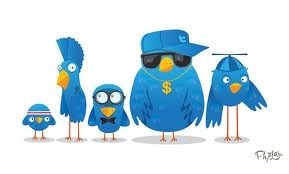 So how do you grow your Twitter community beyond authors? How do you target readers? How do you find people who will actually buy your book?
So how do you grow your Twitter community beyond authors? How do you target readers? How do you find people who will actually buy your book? Heading back into your #Discover link on Twitter, try your hand at searching Book Clubs and Book Reviewers. Both are reader-centric and put you in touch with people who are searching out good books. Don't forget to switch the search field to People, not Tweets (in the top left hand corner if using Twitter on a PC. On the bottom of the screen if using Twitter on an iPhone).
Follow a handful of book clubs and book reviewers but also follow the people who follow them, as they are obviously in the market for good books and book reviews. These are your target market.
Next, find your favourite authors on Twitter, or authors who closely resemble your style. For example, just say you've written the next thing to rival Harry Potter. Search for JK Rowling and then click on her name. It will open up her profile (make sure you get the real JK Rowling, indicated by a blue tick for official). Now click on her followers list. Don't bother adding JK unless you are really interested in reading her tweets, as she doesn't tend to follow back (has one person she follows - and that's her Pottermore profile). Over 1.5 million people follow JK Rowling, and of them, you would assume a large portion are Potter fans. Be selective - find the people who say they are Potter fans in their profile. Follow them. If your profile gives some indication of the type of books you write, you may just find some hungry new fans looking for a new set of books to read.
You can take this a step further. Just say you've written a new paranormal series in the same vein as Supernatural. Or a zombie book. Find television shows and movies in the same genre. Check out their followers. For the most part, these are people already interested in the genre and therefore, more likely to be interested in your books. Take it a step further and take part in the discussions surrounding these TV shows and movies. Remember the #hashtags I told you about last week? Well this is where they really come into their own. That way, you can get chatting to Supernatural fans by hanging out in the #Supernatural threads. You can friend romance fans by spending some time in the #romance threads. Or searching threads on the latest romance movies. This is far more likely to be successful if you are specific in your searches. Target who you follow. It goes without say that if you write erotica, don't bother searching for readers on the Harry Potter sites.
Don't limit it to just your books either. If you enjoy watching Survivor on TV, check out the #Survivor discussion groups and get chatting to other fans. You can follow people this way or just reply to their posts, and let them follow you if they think you're someone interesting. I'm sure you get the picture. The sky is definitely the limit. I've found some of my most interactive followers by participating in threads that had nothing to do with my books. For instance, football threads when watching games live on TV, current affair threads while watching things like 60 Minutes. Or chatting to other fans of reality TV shows like The X Factor and The Voice. The brilliant thing with these threads is they are often real time, i.e., the people are online, tweeting at exactly the same time you are and are far more likely to respond immediately - and hopefully, follow immediately.
Don't forget the non-Twitter way of getting followers too.
Make it easy for people to follow you. Make sure you list your Twitter address everywhere you can. In your email signature, on your website, on your Goodreads profile, on Facebook, on your blogs, on your business cards, on the back cover of your book... Make sure everytime someone looks at your work, they know how to find you on Twitter (and everywhere else).
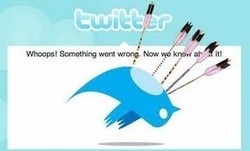 Follower limits
Follower limitsWhen you first start out on Twitter, you can follow up to 2000 people with no limits. Consider the first 2000 a grace period - Twitter is giving you a chance to get popular. They're giving you 2000 invites to your new Twitter Party.
But now that you've followed 2000 people, Twitter start imposing limits on you.
So just what are those limits and are there ways around them?
It's all about ratios. Using the party analogy, you've sent out 2000 invites but only got 100 RSVPs. Twitter won't let you send out any more invites until your party is looking a little more healthy.
Now you can sit back and hope and pray the 1900 people who didn't RSVP just forgot to do so, or were a little slow in getting around to it. You can wait for them to come to the party - but what if they don't? What if they found a better party to attend and have no intention of coming to your little shindig?
Well, you either stay at 100 forever, never able to grow your Twitter party beyond that, or you do what the Too Cool for School group do. You uninvite all those rude people who didn't RSVP.
Think about it this way - you retract those 1900 invites and all of a sudden you have 1900 invites to send to other people who may just think your party is the most happening place in the Twitter-verse. Rehashing the 'how to get followers' steps above, you sending out your 1900 invites (follows) to new people, keeping the 100 partygoers you already had.
There are a couple of ways to unfollow. You can do it the old school way, and that is to click on your Following List and then individually click every single person you invited and see if they are following you back (If you bring up their profile, it will say whether they follow you or not next to their username). Believe me, if you've got to uninvite 1900 people, this is not the way to do it. You will be there forever. It is, however, free and you can unfollow as many people as you want to in a day.
But there are heaps of easier ways to unfollow.
JustUnfollow - sign up with your Twitter account and JustUnfollow will let you automatically see the people who didn't RSVP to your party. On the left hand side of the page, click the Non-Followers list. Make sure it is showing the Oldest First (that way you don't unfollow the people you only just invited - you only unfollow those who have had plenty of time to respond). The free version of JustUnfollow will let you unfollow up to 50 people in a 24 hour period. For most of you, that will be perfectly fine. Just set a reminder and come back at the same time every day and unfollow another 50 non-followers - automatically giving you another 50 invites. If you do this when you first start inviting people to the party, you make your job even easier. Usually, allow people a week to respond - two at the most. If they still haven't followed you, chances are, they won't. Unfollow them and choose someone else.
If you don't want to take a month to uninvite the whole 1900, then you might want to consider the paid version, which allows you to unfollow as many as you like. It's $9.99 a month but if you want to build your numbers on Twitter quickly, this might be the way to go.
JustUnfollow has some other cool features as well. It allows you to see who is a fan of your work, to see who your inactive followers are (those who follow but don't ever interact with you) and to copy other people's follow lists.
There are a number of similar programs on the market. Most have a free version and charge you if you want the unlimited version. It's a matter of Googling them but here are a few more you might like to check out.
Qwitter - emails you whenever someone unfollows your account.
Who Unfollowed Me
IUnfollow
UnfollowersMe
ManageFlitter
Once you get 2000 people to attend your Twitter Party, Twitter releases a few more invites. As a general rule, as long as you keep your Follower/Following ratio at 10%, you can keep growing your Party.
For instance, once you reach 2000 followers, Twitter will give you another 200 invites to send out, and as long as you never go outside that ratio, you can keep inviting people until you start closing in on Gaga's Throne. The higher up you list you go, the more invites you have up your sleeve. For example, I have 3500 followers, which means I have 350 invites up my sleeve. If I had 10,000 followers, I'd have 1,000 invites up my sleeve. At 100,000, you have 10,000 and so on and so forth.
Not too hard to understand. You will always have a few accounts who will never follow you back - especially if you want to keep up-to-date with news or what the celebs are doing. Just keep them within your ratios and you'll be fine.
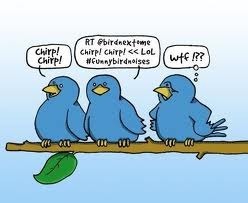 Keeping Followers
Keeping FollowersIt's one thing to get followers, quite another to keep them.
How do you ensure people stay at your Twitter Party?
Easy - make it a fun place to be.
Imagine you get invited to what you think is going to be a cool party but when you arrive, you find out it's really just a Network Marketing Meeting. There's no beer, no cool music. Just a million sales pitches and strong-arm tactics to get you to buy their product.
What are you going to do? You're going to look for the nearest exit and the fastest way out of there. Right?
That's exactly what your followers will do if the only thing you Tweet about is your book. They'll find the nearest exit and slink away without ever buying a thing - and they'll think worse of you for inviting them there in the first place.
If you want to succeed in the Twitter-verse, you have to accept one very important thing - Twitter is social media. And you know what social is right? It's not sales? It's not a mini-catalogue for your products. It's interacting with other people. And interacting is a two-way street.
Let's go back to the Top 5 Twitter accounts.
You think Lady Gaga got almost 33 million followers by begging people to buy her albums? No. Gaga got popular because she understood what her army of fans wanted. They wanted to know what was happening in her life. Now I'm not suggesting you post Tweets about your bathroom habits, or that you feel the need to tell people everything you ate today. There is such a thing as sharing too much.
Gaga shares things with her fans. She tells them what music she's listening to (why, because people care what a music guru is listening to - they might not care what you are listening to though). She tells them when she's rehearsing. She wishes her friends and family a happy birthday. She shares photos with them. She shares other people's tweets with them.
Do you get it yet? She's letting her fans into her world, giving them a glimpse of her they wouldn't get to see any other way.
So how does that translate to you, as a writer?
Well, in my experience, people still want to get to know you. They are far more likely to buy your books is they have developed some kind of 'relationship' with you than just because you tell them to a hundred times. Tell them what you're reading (and no, not just your own books). Tell them interesting places you've been to see. Share a photo of a beautiful sunrise or sunset. Let them into your writing life. Did you struggle this week with getting words on paper? Tell them. Let people see you as a real human being. Interact with them. Chat. Encourage responses. And if people take the time to answer you, make sure you answer back.
I used to personally thank every new follower I got, making a personal comment about them. For instance, if they were an author too, I wished them good luck with their book - maybe even mentioned that book by name - I showed them I was interested in them as more than just a number on my Twitter lists. I interacted. If a fan of a TV show I watched followed me, I'd engage in conversation about that show. Maybe talk about last week's episode. Those early followers are still with me now.
Unfortunately, I cannot do that any longer. Now that my account has grown - on average, I have about 100 new followers a day - the logistics of responding to every single person is beyond me. If I did that, I'd spend all my day on Twitter and never release another book. I do, however, still try to respond back to people when they comment, favourite or retweet my Tweets. It doesn't take too long, especially as I have it on my iPhone.
Another way to make your tweets interesting is to share information. Did you read a blog on writing this week that your author friends might find interesting? Share it on Twitter. Did you read a book that you loved? Share it. Did you read something in the newspaper that really caught your attention? Share it.
As my kids liked to say when they were young, sharing is caring.
Michael Hyatt, in his blogs on Twitter, speaks of the 20-to-1 rule. In other words, for every one sales tweet you send, you should be sending out 20 non-sales tweets. If your ratio is the other way around, your Twitter Party is a Network Marketing Meeting in disguise and your guests will flee faster than rats from a sinking ship. In the spirit of sharing, Michael has another blog, which builds on these principles. Check it out http://michaelhyatt.com/12-ways-to-get-more-twitter-followers.html
Keep your Twitter Party interesting and people will stick around. Make it boring and they're out of there. Simple as that.
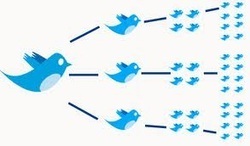 How to write tweets that go viral
How to write tweets that go viralWait a minute. Viral? Isn't that some kind of disease? Why would we want our Tweets to have a disease?
Well, no, it's not a disease but a good tweet - a viral tweet - will spread as fast as one.
Remember Kony? The aim was to make Kony so famous the whole world was aware of his crimes against children. And it worked. Love it or hate it, every man, woman and child in the known universe now knows who Kony is. And it all started on Twitter. They posted the video and then it went viral.
So what is viral and how does it work?
In a nutshell, it is when your tweet extends beyond your immediate audience.
Let's start small, to keep the math simple. For instance, say I tweet something. My 3500 followers read that tweet. Say 3 of my followers like my tweet enough to share it with their followers. Of those three, one has 100 followers. Another has 1000 and one has 10,000. My tweet is now being viewed by potentially 14,600 people. Say each of those three followers has three followers with the exact same numbers who find the tweet interesting enough to retweet. (My brain is starting to ache just thinking about this but let's give it a go). My original tweet is now being viewed by 59,000 people. And if their followers did the same thing, my Tweet would be viewed by.... Well, I'm a wordsmith, not a mathematician. But you get the idea.
Now imagine 10 of my followers retweeted my post, and in turn, each of those ten had 10 users retweet. Very quickly, your post could be viewed by millions.
So that's how viral works.
But how can you write a tweet that goes viral?
According to a 2010 study by Chadwick Martin Bailey the top 3 reasons people retweet are:
Because they found it interesting or entertaining (72%)Because they thought it would be helpful (58%)Because they thought it was funny (58%)
Emotions: Tap into people's emotions. If your tweet evokes an emotional response, people are more likely to retweet or respond in some way. You could be looking for a positive response or you could be looking for a negative response. It could be humorous, happy, angry, snarky or even sarcastic. Just don't be bland and boring.
Timing: It makes sense that if you post when people are online, that more people will read your tweets. Research shows that Tuesday mornings and Friday afternoons are the most popular times on Twitter. But that's where it starts to get a little complicated. Take me, for instance. I live in Australia but am seeking a global audience for my tweets. The largest number of my followers are based in the States, so if I want them to read my Tweets, I need to be posting Tuesday mornings and Friday afternoons their time. But wait - that's like 2am for me here in Oz. I don't really want to stay up until that time to make sure my Tweet reaches the largest possible audience, so what are my options?
I have started using Buffer to schedule my Tweets. Like all good Twitter apps, they have a free version and a paid version. For the moment, I'm satisfied with the free version. It allows me to schedule four tweets a day, spreading them out to post morning, noon, afternoon and evening. It also allows me to track how many people have retweeted and mentioned my tweet or clicked on the links. It gives me the numbers for how many potential people have seen my tweet. It's great stuff. Still, I don't want to only post 4 tweets a day, so I use this only to send out my key tweets. The rest - the general chit chat, the social interactions, the newsy retweets and information sharing - I do in real time.
There are dozens of other Twitter schedulers. Hootsuite is one. Click here to read The 6 top Twitter Schedulers.
Ask for Retweets:
Too simple? Statistics show that only 12% of posts that don't ask for a retweet are retweeted. On the other hand, 51% of Tweets that ask for a retweet get retweeted. Remember though to be polite, and don't expect them to retweet everything you post. It still has to be something of interest - something that makes them want to press retweet. Don't expect people to want to retweet all your sales pitches either.
If you want more information on writing Viral Tweets, check out http://upandrunning.bplans.com/2012/06/18/8-ways-to-help-your-tweets-go-viral/
In Part 3, we'll discuss:
Twitter Jail - what it is and how to avoid getting sent there. Twitter Lists - keeping track of who's who in your Twitter-Zoo. Using vulgarity on Twitter- the pros and consMarketing tips that do work on Twitter
If you have anything else you would like me to cover, put it in the comments and I'll try to fit it in.
Don't forget - if you don't already follow me on Twitter, I'd love to add you to my Twitter Party. I try to keep it fun and interesting for everyone. https://www.twitter.com/rileybanksbooks
Published on January 11, 2013 19:56
January 8, 2013
Next Big Thing Blog Hop Tour
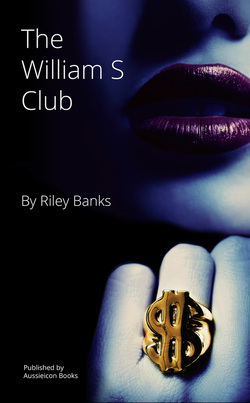 The 'Next Big Thing' Blog Hop Tour is a fantastic idea. The premise: share some upcoming authors - we 'next big things' - with as wide an audience as possible. I was passed the baton by CJ Blue, author of Global Superstar. CJ was passed the baton by Rebecca Munro, author of a three part series called Veiled. Not sure when or where this started but hopefully we can rival the Olympic flame in keeping this going for as long as possible.
The 'Next Big Thing' Blog Hop Tour is a fantastic idea. The premise: share some upcoming authors - we 'next big things' - with as wide an audience as possible. I was passed the baton by CJ Blue, author of Global Superstar. CJ was passed the baton by Rebecca Munro, author of a three part series called Veiled. Not sure when or where this started but hopefully we can rival the Olympic flame in keeping this going for as long as possible. The Next Big Thing? It has such an enticing ring to it, especially for any author, like myself, who has aspirations to be the next JK Rowling/Stephanie Meyer/Suzanne Collins/EL James. That doesn't mean I want to ride their coat tails or copy their ideas. Instead, it means that, like them, I want to blaze my own trail to literary success, to become a household name, known by every reader whether a fan of my work or not.
What a glorious dream, huh? The encouraging thing for me is that all of the above started out just like me - unknown. They weren't born with silver spoons in their mouths. As far as I am aware, none of them have publishing bloodlines that can be traced back to the literary masters. They found their success by writing a cracking tale that resonated with the people who read it. And that is something we all have the potential to do.
Anyway, enough background. On with the questions and answers.
1. What is the title of your book?
The William S Club
2. Where did the idea come from?
Strangely enough, it came while I was reading a newspaper article on property prices, and how much they have risen over the years. My imagination is always quite active, so I started wishing I had a time machine to head back in time and buy up property when it was cheap. And from there, the book was created, the characters dictating all the twists and turns the book took along the way. I created William Sydney Harvey, a poor man, who bought up big while property prices were at an all time low, buying his first property during the bombing of London in WWII. Fast forward fifty years and William now heads up the Harvey Corporation, the world's richest, family-owned company. Together with his two namesakes, his son Bill and grandson BJ, they are part of what has been dubbed The William S Club by those excluded from its hallowed halls.
But what if there was something dishonest in the way they became rich? What if the one person who knew their secret was out of jail and had the power to end their reign? How far would The William S Club go to protect their secret? And just what is their interest in Charlotte Burke, an investigative journalist with The Daily Telegraph?
3. What genre does your book fall under?
Genre was the hardest thing for me to narrow down. It has quite a few sex scenes in it but is not what you would term a straight out erotic novel (as the sex scenes are secondary to the rest of the story and the characters themselves). It has elements of romance, suspense, mystery and even a tiny touch of sci fi thrown in for good measure. The fast-paced action and page-turning suspense, not to mention the underlying criminal aspects of The William S Club, would probably put it in the realms of a thriller but because of the sex scenes, it would be safest to call it an erotic thriller - like a Basic Instinct or Fatal Attraction (in that they weren't really erotic stories but had plenty of erotic action).
4. Which actors would you choose to play your characters in a movie rendition?
I've actually been thinking about this a bit lately, as I am contemplating writing the screenplay for The William S Club.
Charlotte Burke is the main character. Having fled her homeland, Charlotte is hiding out in London, as far away from the ghosts of her past as she can get. She is brave and feisty but beneath her beautiful exterior hides the scars of her damaged past. I love Emma Roberts as an actress and think she could pull of the damaged lead character quite well. In an ironic twist, Emma Roberts also played the very naughty character, Riley Banks, in Celeste and Jesse Forever and created a bit of a YouTube sensation with the tongue-in-cheek song, Do It On My Face .
Twin brothers, Damon and BJ Harvey might be identical twins but they are polar opposites of each other. As the oldest child, and the namesake of his father and grandfather before him, BJ is thrust into the dark, secretive world of the William S Club from a very early age. Outside their circle of influence, Damon was largely ignored by the power brokers in his family, and that's just the way he prefers it. Unlike BJ, Damon is compassionate and family-oriented. Chris Hemsworth is an actor able to explore the duel sides of these two very different characters.
Charlotte's best friend, Miranda is both vixen and wide-eyed innocent. She believes in happily ever after but is not afraid to test the waters trying to find her Knight in Shining Armour. In The Vampire Diaries, Nina Dobrev does a brilliant job of portraying two very different characters. I love her portrayal of the evil, selfish Katherine but she is just as convincing as Elena who puts everyone's needs above her own. I would expect Nina to bring the same duality to Miranda's character.
Zac Wilson is a complex character - an attractive man with a twisted soul who is capable of untold horrors. Ryan Gosling has done equally well playing the romantic lead and the disturbed anti-hero. I think he'd make a truly terrifying Zac Wilson.
Eric Bana is one of my favourite Australian actors so who better to play the rugged and tragic hero, Paul Baker; a man who spent 20 years jailed for a crime he didn't commit and now wants nothing more than to find the daughter who was stolen from him.
Rounding out the nefarious William S Club is Bill Harvey and his father William S Harvey senior. I would choose Andy Whitfield and Liam Neeson for these roles, particularly as they bear a resemblance to Chris Hemsworth.
 Charlotte Burke
Charlotte Burke 1st choice -
Emma Roberts
2nd choice -
Rachel Taylor
 Damon & BJ Harvey
Damon & BJ Harvey 1st choice -
Chris Hemsworth
2nd choice - Channing Tatum

Miranda Evans -
Nina Dobrev

Bad boy Zac Wilson -
Ryan Gosling (he can do dark so well but is still sexy)
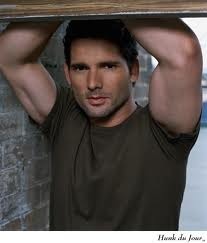 Paul Baker
Paul Baker Eric Bana
 Bill Harvey -
Bill Harvey - Andy Whitfield
 William S Harvey -
William S Harvey - Liam Neeson 5. What is the one-sentence synopsis of your book?
Charlotte Burke had no desire to return to Australia but the William S Club had other ideas.
6. What is the longer synopsis of your book?
The William S Club tells the story of Charlotte Burke, who changed her name and fled Australia, swearing never to return. Now in London, working as a journalist for The Daily Telegraph, Charlotte has put her old life behind her; a life scarred by memories of her mother's suicide and her father's criminal history. When the Harvey Corporation invites Charlotte to take part in an exclusive press trip, she has no idea her past is about to come crashing into her present.
The William S Club, the shadowy power brokers at the helm of the Harvey Empire, will use Charlotte to draw out her father, who worked for Harvey Incorporated before being imprisoned. They will stop at nothing to achieve their goals, plunging Charlotte into a dangerous cat and mouse game played across three continents, leading Charlotte ever closer to Sydney and their ultimate showdown.
With a dangerous psychopath on the loose and the bodies piling up, Charlotte turns to Damon Harvey, hoping he is nothing like his dangerous relatives. Can she trust him or is he just another cog in The William S Club's deadly game?
7. Is your book self-published or represented by an agency?
It is published by Aussieicon Books, which I also own, so I suppose that would put me in the category of Indie Publisher/Published. Am on the look out for an agent though, so if any agents are lurking...
8. How long did it take you to write the first draft of your manuscript?
About nine months. I then left it for quite a while and began working on my YA series, The Vampire Origins. I had almost forgotten about it until I was searching through my files and found it. Pulled it out, dusted it off, gave it a bit of an update and voila! Put it up for sale. I am of the firm opinion that manuscripts, like fine wine, get better the longer you leave them. Never, ever, ever put a book up for sale within days of finishing it. Go through the process, get people to read it for you, get it professionally edited, then come back for one last read through. I guarantee there will be things you find that make you cringe and reach for your editing pen.
9. Who or What inspired you to write this book?
As stated above, the book sprang up from an article I read on property prices - but the format I chose for the book, and the characters I breathed life into... Well that came from an amalgamation of all the interesting characters I've met over the years as we have lived and travelled around the world. All the details about the Harvey family's private jets came from my conversations with the pilots and crew who worked for the Saudi Arabian royal family. We were very close friends with the pilots who flew for Prince Al Waleed, as well as the Crown Prince, and boy, did they have some wild, hair-raising tales to tell of life onboard those private jets. Living the lifestyle we did, we also got to rub shoulders with some very interesting people, many of whom I like to believe would be right at home on the pages of The William S Club. The chapters set in France were definitely inspired by my love affair with France as a whole. If I had to list my favourite place on earth, it would definitely be France. Would move there in a heartbeat if I had the money... In fact, that's my dream - make enough money out of my books to fund a permanent move to France. However, I must clarify here that under no circumstances do I have personal experience with the types of clubs that Charlotte and her friends visit in Paris. I've had a few friends ask me what I really got up to in France. I can unequivocally state, I have never been to Le Jardin de l'Amour, or any club even remotely like it. That is entirely my imagination, with a little internet research thrown in for good measure. You know, just to clear up any misapprehensions...
As for the rest of the locations in the book, I have lived in Dubai and Sydney, and travelled through France and the UK. Only place I haven't been yet is Italy, but I will make it there one day, maybe when I move to France. :)
10. What else about your book might pique the reader’s interest?
At its heart, The William S Club is a gripping thriller. Every person that has read it so far has commented on how hard it was to put down. There are a lot of cliffhangers throughout the book, coupled with plenty of suspense, murder, intrigue and blackmail. One of the things I believe works so well in The William S Club is the characterisation. While Charlotte Burke is the main character, all of the other characters are given their own voices. The reader gets to know each character and their motivations - but don't get too attached. Plenty of people die. I must warn though that The William S Club is not for the faint hearted, and probably not a great gift idea for your church-going grandmother. It's got quite a bit of language and enough sex scenes to warrant labelling it an erotic thriller. There has to be something about the book, because even as the author, I still find myself unable to put it down when I re-read through it, turning pages with the same frenzied anticipation as first-time readers. Must be some reason people keep giving it such high ratings, right?
Thanks so much for listening to my ramblings about my book. Now to pass the baton on to the next players in 'THE NEXT BIG THING' Blog Hop Tour. I hope you all stick with the tour and find out more about these talented writers' work. Mark your diaries for their installments on 16 January 2013.
Toni Carter is the author of Cheers William, It's Christmas. I met Toni Carter while living in Saudi Arabia. She was one of those friends I told you about who shared amusing tales of life on board private jets, as Toni used to be head flight attendant for a private airline. Now living in Vietnam, Toni has turned her hand to writing, and is quickly making a name for herself, moving up the bestseller lists as fast as those planes used to take off. You can read Toni's 'NEXT BIG THING' Blog Hop Tour at The Mad Existence of a Writer and follow Toni on Twitter https://www.twitter.com/WriterToniC
Michael K. Eidson is a speculative fiction author, blogger, and web programmer. His published short stories are available online at The Troll Mystic, and in the Troll Tunnels anthology published by Peryton Publishing. He blogs about magic, fiction, gaming and writing at The Troll Mystic, and about music at Mystic Sounds. You can also follow Michael on Twitter https://www.twitter.com/eposic
Ashley Torbeck is the author of the Daughters of Night series. She's an avid reader and sarcasm specialist. Her quirky and bubbly personality stems from the vast amount of information she crammed into her head as a child. Now an adult, she sits at home typing away on her laptop, dreaming up some unusual young adult novels to entertain the masses, while awaiting the zombie apocalypse, surrounding herself with love and insanity.
You can join Ashley for her part of the blog tour at Drunken Space Penguin and follow her on Twitter at https://www.twitter.com/Ash_Torbeck
Published on January 08, 2013 14:05
January 7, 2013
The beginner's guide to Social Media: Twitter and Retweeting
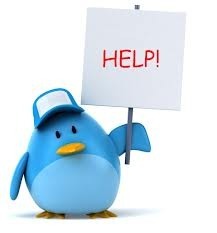 The beginner's guide to Social Media: Twitter and Retweeting
The beginner's guide to Social Media: Twitter and Retweeting
Embarking on the writer’s journey often means learning new technologies, some that are about as clear as mud.
I have always been able to navigate my way around a computer but since becoming an author, I have had to take a crash course in computer-geekdom. I’ve had to learn how to create and update webpages, publish web blogs, upload to YouTube, design book trailers and book covers – and that doesn’t even scratch the surface on all the social media networks I’ve had to familiarise myself with. There’s Facebook, Twitter, Bebo, Blogster, delicious, Digg, Flickr, Fuelmyblog, Gather.com, Goodreads, Google+, LibraryThing, LinkedIn, LiveJournal, Meetup, Myspace, Ning, Pinterest, Shelfari, StumbleUpon, Tagged, Yammer, Zooppa...
Ah, the list just goes on and on ad nauseum.
Wikipedia lists over 200 different social media networks, though by the time this blog goes online, that number will have probably already grown (http://en.wikipedia.org/wiki/List_of_social_networking_websites)
I am not even going to attempt to cover them all. If we tried to keep up with every social media network out there, we’d never get any books written. And that, my friends, is the most important thing to keep in mind; that mythical balance between writing and promoting.
I will, however, attempt to explain the pros and cons of the ones that are beneficial to you as an author/aspiring author.
First off, let’s start with the Twitter-verse. Over the next few weeks, I will try to explain what exactly Twitter can do for you and your books.
If you’ve already been using Twitter and know the basics, you might want to mark this blog and come back next week when we check out some of the ways to use Twitter to better effect. This week is for the real beginner that has no idea how Twitter works – the writer floundering in a Twitter-verse they don’t understand.
Click Subscribe (in top right hand corner) to make sure you don't miss out on any of these guides.
Twitter Basics:
I’m going to assume that you at least know what Twitter is. If you don’t, do a Google search (and if you don’t know what Google is... you need help I cannot provide).
I’m going to assume you already have an account. Before we go any further, it is vital that you give some indication as to what you do in your profile heading. For example, in mine (https://www.twitter.com/rileybanksbooks I clearly state that I am an author. I also list my books and my website address. It is best to put some photo on Twitter, even if it is not you. People tend to naturally steer clear of profiles with no picture. By putting who you are and what you do in your profile, people will be able to search you out.
Now let’s dig a little deeper. Let’s start with the real basics – Twitter definitions.
Follower – What is a follower and how do you get them?
No, it’s not some bizarre cult you’ve just signed up for. You don’t have to sell your home and donate all your money to the people you follow (though if you choose to send me money, I won’t turn it away).
Simply put, a follower is someone who chooses to read your thoughts. On the flip side, you follow people whose thoughts you are interested in reading. Your Twitter Feed (or homepage) will show all the posts from people you follow.
Remember, Twitter connections are not always reciprocal. You can follow people who choose not to follow you back (this often happens when you follow celebrities, major companies and news services – they rarely follow back), and vice versa – you do not automatically have to follow back anyone who follows you.
That being said, it is a good practice to get in to if you want your numbers to grow. The more followers you have, the more you get.
So how do you find followers on Twitter?
When you first signed up to Twitter, you would have been asked to follow some popular people, mostly those famous musicians, sportspeople, news services and the likes I mentioned earlier. Main problem with that is that very few will have followed you back, and at the end of the day, that’s what you want Twitter for – the followers.
A great way to grow your follower list is to add other authors.
So how do you add people?
Go to the #Discover tab on your Twitter account and click on the left hand side tab ‘Who to follow’. It will give you a list of people that Twitter thinks is similar to you (this grows and evolves as you add more people).
Alternatively, type the word ‘author’ into the search bar. Twitter will then give you a list of other authors you can follow.
Another way to search this out is to type in ‘#author’. The hashtag opens up popular search lists. We’ll learn more about hashtags later but for now, it will allow you to tap into a wide net of potential followers.
A few other good key words to search for people involved in the book community: publisher, read, book, book review, literary, Indie, Goodreads.
Now that you’ve added some people, sit back and wait for them to reciprocate. If they don’t follow back, you can always unfollow them (we’ll find out how later).
Tweet – Is it a bird...
A tweet is the name given to the mini-message sent on Twitter. Tweets are public and can be read by anyone searching keywords and subjects, so if you’re looking to say something personal, stick to direct messaging.
One of the hardest things to get used to with Twitter is the 140 character limit. That means every post you send must be short and sweet and to the point.
Twitter is not the place for verbose statements and long-winded sales pitches. As you read more tweets, you will see that people tend to favour abbreviations. As such, Twitter has spawned a kind of Twitter short hand. You becomes u. You are becomes UR. To or too becomes 2. Retweet becomes RT, weekend becomes w/e and so on. It’s all about being frugal with those characters.
If possible, don’t use up all of your 140 characters. You want to leave space for people to retweet or quote your tweet.
That leads us to the next one:
Retweet
A retweet is what happens when someone shares your tweet (or you share someone else’s tweet). It is a stamp of approval, in some ways. Someone is saying ‘I think this post is worth sharing’.
Think of it as a worldwide version of Chinese whispers (hopefully without the errors in the message). You say something, your followers pass it on, and their followers in turn, pass it on.
Great tweets (or just very average ones written by famous people) can be retweeted millions of times. Obama tweeted about his re-election and it was retweeted more than 800,000 times. Retweets are definitely your aim. Think of a retweet as someone wearing a billboard advertising you and your product.
Retweeting is also something of a ‘you scratch my back, I’ll scratch yours’ phenomenon. If you see something that grabs your interest, hit the retweet button and share it with your followers. You may just find that person paying you back with some kindly retweets of your own information.
If you want to add your own thoughts to the tweet, when you press retweet, click on ‘Quote’ and it will allow you to add in your own text. The whole thing will still need to stay below 140 characters.
Mention
A mention is what happens when someone inserts an @ sign before your Twitter name. It’s kind of like a wave really. They are acknowledging you publically, and drawing your attention to the post they are making.
Mentions also happen when you press reply to a Tweet. Basically, you are opening up a line of communication with that person.
Direct Message (DM)
Direct message or DM is a private tweet that goes only to the person you are talking to. It is still governed by Twitter’s 140 character count but it is not broadcast publically to all your followers.
You send a DM by clicking on a person’s profile and dropping down the tab next to the following button to select ‘send a Direct Message’.
Please note, you can only send a direct message to someone who is following you back. You cannot send direct messages to anyone not following you.
Another thing to note is that many people consider the direct message a form of spam and don’t tend to read direct messages. Whatever you do, use them sparingly.
Hashtag
What is a hashtag? The hashtag, or # as it is in Twitter shorthand, makes your Tweets more easily searched.
Say, for instance, I want to find out the latest news on the bushfires in Tasmania (hey, going with current news here at the moment), I would search #bushfires #tasmania. That would bring up every tweet that has been made with those hashtags and puts me instantly in touch with the topics I want to read about, rather than wading through millions of twitter posts trying to find something I want to know about.
Popular hashtags for authors include: #author, #book, #writer, #fiction, #non-fiction, #read, #Indie, #ebook , #Amazon, #Kindle, and #Goodreads.
If you want people to be able to find a list of posts about you or your book, you can also create hashtags yourself. For instance, I have created hashtags for #TheWilliamSClub (though I’m not always the best at remembering to use it). That way, if someone clicked on that link, they could see all of the posts and news about my book.
You may have heard people on TV referring to things trending worldwide on Twitter. That’s basically when a hashtag gains so much popularity, people all over the world are logged onto that list, posting and reading posts on the subject.
If you want to tap into what is trending, click on the #Discover tab again and down the bottom of the left hand column, you will see what is trending worldwide. As I write this, #TheBachelor, #Bachelor, and #faydeeandjamesfollow are just a couple of topics trending.
Next week, we’ll talk about:
· How to increase your Twitter followers
· Twitter following limits – what they are and how to avoid them
· How to write tweets that go viral
· Balancing social interaction and engagement with sales pitches
· A few apps that you can use to help make your Twitter experience better.
Hopefully you have learned something new. Feel free to put some of your newfound skills into practice on me.
For starters, click on my Twitter link and follow me. I’m always looking for great new followers to meet and interact with. https://www.twitter.com/rileybanksbooks
If you want to practice retweeting, go to my profile page and retweet some of my Tweets (I know, what blatant self-promotion – shame on me).
Check out some of the hashtags I mentioned in this blog. Also see what is trending on Twitter and take part in some of the discussions.
Most of all; get out there and have a go. Don’t be afraid to interact with people on Twitter – and you learn more by doing than observing. Who knows, you may find yourself loving the Twitter-verse as much as I do.
Published on January 07, 2013 21:09
January 1, 2013
Jumping Bandwagons or Blazing New Trails
As an author (or an aspiring author), it is always challenging coming up with new material to write about. In the book world, there is always some degree of copycatting - or to put it more kindly, jumping on bandwagons. Think about it - Harry Potter hit the top of all best seller lists and all of a sudden, there was an influx of magical books being published. Twilight spawned an entire industry of vampire love stories and teen vampire series. The Hunger Games trilogy created a wider audience for the dystopian genre. And then there came (pun intended) 50 Shades of Grey, which not only put erotica on the literary map, it meant every man, woman and dog leapt aboard the Bondage Train in an attempt to cash in on EL James' success.
Jumping bandwagons is nothing new, nor is it limited to just the publishing industry (though it has certainly been taken to whole new heights by the relative ease of publishing that the Indie explosion has created). Hollywood has been doing it for decades. Remember back in the 1990s, when every Hollywood studio had a new twist on the Robin Hood tale? There was the Kevin Costner version, the Patrick Bergin version, the spoof version (Robin Hood, Men in Tights), the animated version, the kids TV series, the adult TV series... You get the picture, the 90s were dominated by everyone trying to cash in on the heroics of Robin Hood. Some of these came out so close together, they almost piggybacked off each other at the box office.
A couple of other Hollywood bandwagons:
Armageddon vs Deep Impact, The Day After Tomorrow, The Core, and every other end of the world movie Hollywood has brought to the silver screen.
Antz vs Bug's Life
The Truman Show vs Ed TV
Dante's Peak vs Volcano
Anyway, off the movies and back to books. Right now on Amazon, if you type bondage into the book search bar, and limit your search just to fiction/literature, there are 6592 books with bondage in the subject or title. Type in BDSM and that number jumps to 12,078 (of a little over 95,000 erotica tagged books). That means that 1 in 7 erotic books has got some form of BDSM or bondage in the subject matter. Sure, some of them pre-date 50 Shades but a vast majority are trying hard to ride EL James' coat tails. I am certain there are many that beat the pants (yep, pun again intended) off 50 Shades. If there is one thing all the critics agree on, 50 Shades is not the best written in its genre. But without a doubt, it was the most popular and literally pulled the covers off the dark underworld of BDSM.
Now I can understand people wanting to cash in on what is popular, but is it a good idea to jump aboard the latest literary bandwagon? My personal opinion is no.
Think about it: What do Harry Potter, Twilight, The Hunger Games and 50 Shades all have in common - apart from their authors now being millionaires? They all blazed new trails. Of course, there is nothing truly new under the sun. Every subject matter has been written about, sung about and made into movies. Harry Potter was not the first magician to tell his tale. There are thousands of books about witches and wizards and magical creatures. But JK Rowling certainly gave us a whole new twist to the magician story - and will forever be written in the history books for doing so. Twilight was not the first vampire story, nor was it even the best. But it was the first to really give us the 'tragic vampire feeds on animal blood, falls madly in love with a human and has all the teen drama associated with it'. It was like a soppy romance and teen drama, all rolled into one, where the object of her affection just happened to be a vampire. It wasn't about Edwards lust for Bella's blood but his love for her that defied his natural instincts.
As an author, I would much rather be a trail blazer, searching out the next literary trend, than a follower running after the leaders, trying to forever play catch up with those already ahead in the game.
Dream big - create new universes, new twists, push the boundaries and dare to be different. You just may spawn your own publishing trend that will have other authors scrambling to catch up with you.
So will you climb aboard the latest trend or dare to be different and blaze your own path?
Jumping bandwagons is nothing new, nor is it limited to just the publishing industry (though it has certainly been taken to whole new heights by the relative ease of publishing that the Indie explosion has created). Hollywood has been doing it for decades. Remember back in the 1990s, when every Hollywood studio had a new twist on the Robin Hood tale? There was the Kevin Costner version, the Patrick Bergin version, the spoof version (Robin Hood, Men in Tights), the animated version, the kids TV series, the adult TV series... You get the picture, the 90s were dominated by everyone trying to cash in on the heroics of Robin Hood. Some of these came out so close together, they almost piggybacked off each other at the box office.
A couple of other Hollywood bandwagons:
Armageddon vs Deep Impact, The Day After Tomorrow, The Core, and every other end of the world movie Hollywood has brought to the silver screen.
Antz vs Bug's Life
The Truman Show vs Ed TV
Dante's Peak vs Volcano
Anyway, off the movies and back to books. Right now on Amazon, if you type bondage into the book search bar, and limit your search just to fiction/literature, there are 6592 books with bondage in the subject or title. Type in BDSM and that number jumps to 12,078 (of a little over 95,000 erotica tagged books). That means that 1 in 7 erotic books has got some form of BDSM or bondage in the subject matter. Sure, some of them pre-date 50 Shades but a vast majority are trying hard to ride EL James' coat tails. I am certain there are many that beat the pants (yep, pun again intended) off 50 Shades. If there is one thing all the critics agree on, 50 Shades is not the best written in its genre. But without a doubt, it was the most popular and literally pulled the covers off the dark underworld of BDSM.
Now I can understand people wanting to cash in on what is popular, but is it a good idea to jump aboard the latest literary bandwagon? My personal opinion is no.
Think about it: What do Harry Potter, Twilight, The Hunger Games and 50 Shades all have in common - apart from their authors now being millionaires? They all blazed new trails. Of course, there is nothing truly new under the sun. Every subject matter has been written about, sung about and made into movies. Harry Potter was not the first magician to tell his tale. There are thousands of books about witches and wizards and magical creatures. But JK Rowling certainly gave us a whole new twist to the magician story - and will forever be written in the history books for doing so. Twilight was not the first vampire story, nor was it even the best. But it was the first to really give us the 'tragic vampire feeds on animal blood, falls madly in love with a human and has all the teen drama associated with it'. It was like a soppy romance and teen drama, all rolled into one, where the object of her affection just happened to be a vampire. It wasn't about Edwards lust for Bella's blood but his love for her that defied his natural instincts.
As an author, I would much rather be a trail blazer, searching out the next literary trend, than a follower running after the leaders, trying to forever play catch up with those already ahead in the game.
Dream big - create new universes, new twists, push the boundaries and dare to be different. You just may spawn your own publishing trend that will have other authors scrambling to catch up with you.
So will you climb aboard the latest trend or dare to be different and blaze your own path?
Published on January 01, 2013 20:21



